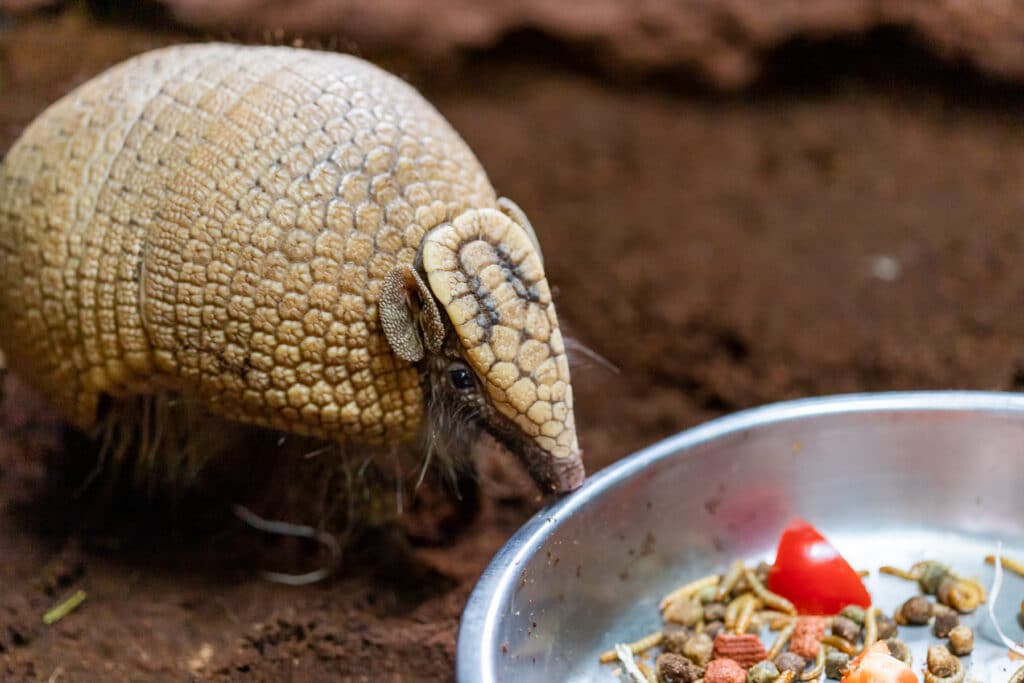
Our three-banded armadillo, Myrtle, lives in an exhibit in Monkey Heights next to the pygmy slow loris.
She is naturally a nocturnal animal, however her keepers are using a technique called reverse lighting to help Myrtle be more active during the day. By adjusting the lighting in her enclosure – keeping it dark during the day and light at night – she naturally shifts her sleep schedule. This helps visitors see her when they’re most active, as well as helping the keepers look after her, while still supporting their natural behaviours.
This species lives in the Grand Chaco: a huge area of tropical grassland that covers parts of Bolivia, Paraguay, Argentina and Brazil.
Armadillos have a long sticky tongue that they use to lap up insects, especially ants. They receive a special diet here and will eat small quantities of fruit and vegetables as well.
Interesting facts!
- Unlike most armadillos, this species can completely enclose itself in its armoured shell to protect against predators.
- Three bands of flexible armour give it its name and allow it to curl up tightly.
- They don’t dig burrows like other armadillos but uses abandoned ones or hides in vegetation.
- They use their keen sense of smell to locate food underground.
Conservation
The Southern three-banded armadillo is currently classified as Near Threatened on the IUCN Red List. While not yet endangered, its populations are declining due to habitat loss, primarily from agricultural expansion and deforestation in South America. Additionally, it faces threats from hunting and the illegal pet trade. Conservation efforts are underway, including habitat protection in national parks and awareness campaigns, but continued action is needed to prevent further decline and ensure the species’ long-term survival.

